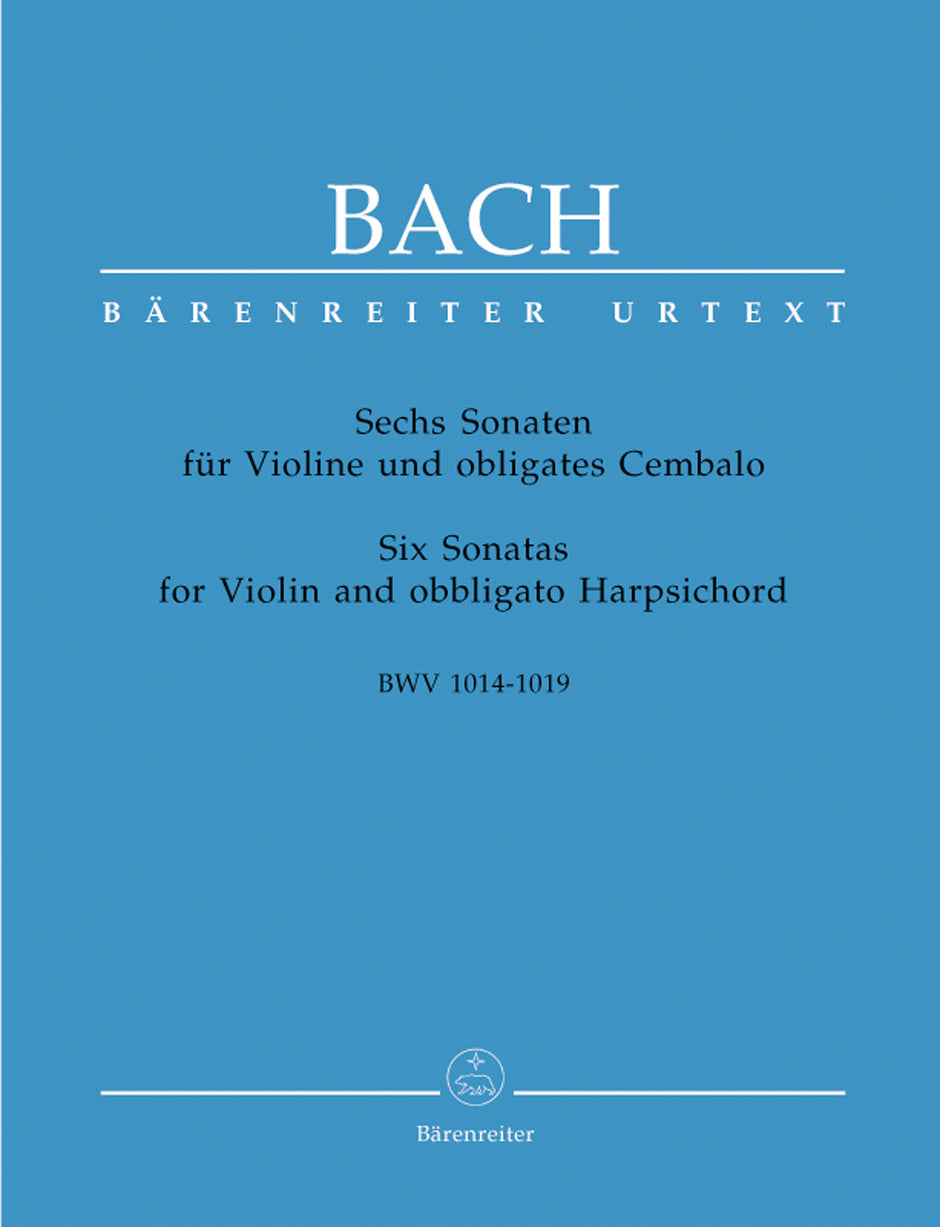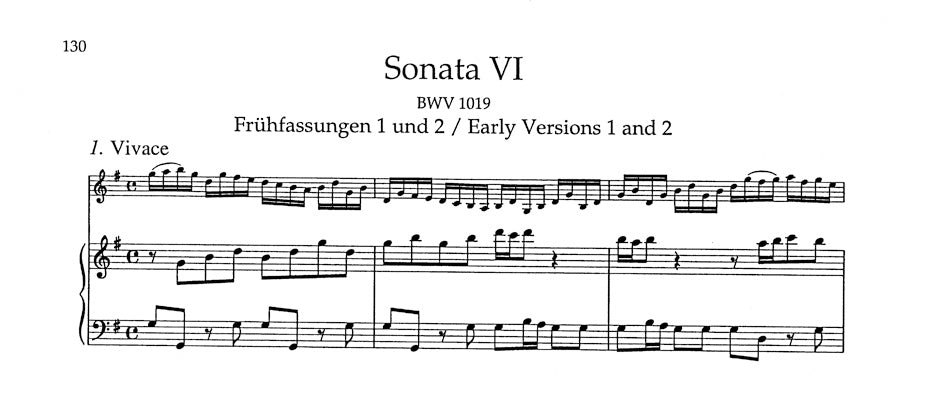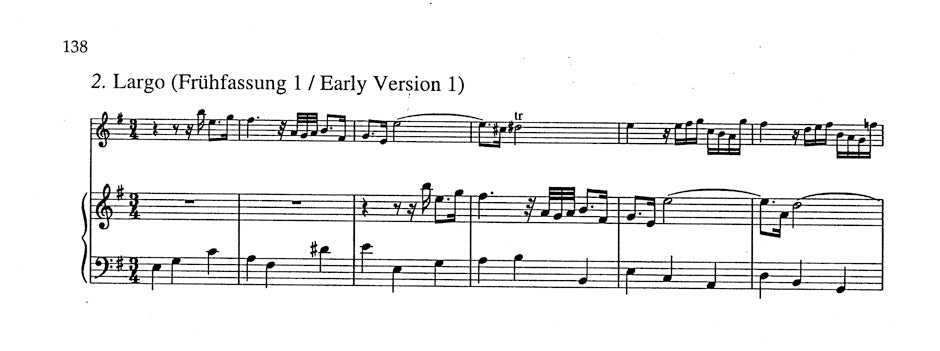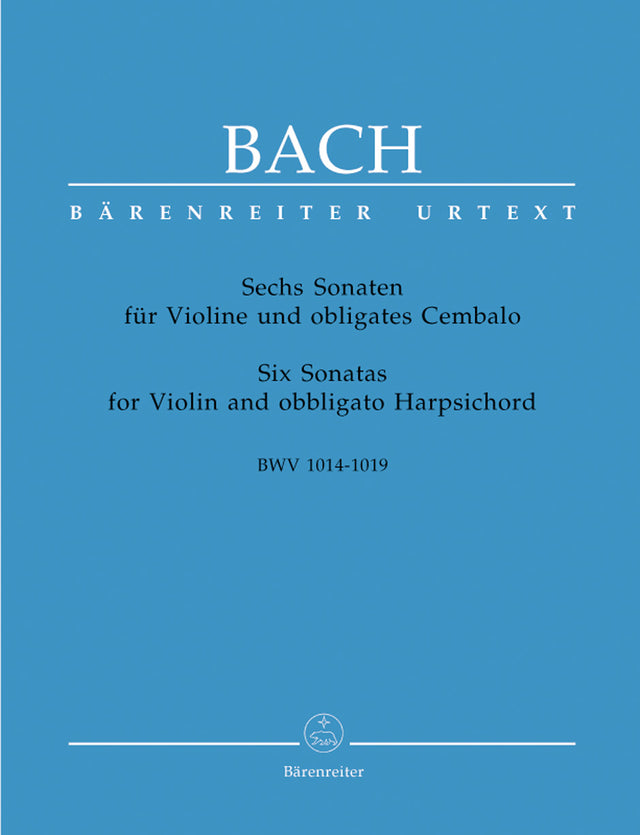Bach: Violin Sonatas, BWV 1014-1019
In stock and typically ships within 1 business day.
- Composer: Johann Sebastian Bach (1685-1750)
- Editors: Peter Wollny, Andrew Manze
- Instrumentation: Violin, Harpsichord
- ISMN:
- Size: 9.6 x 12.2 inches
- Pages: 295
- Urtext / Critical Edition
Description
Bach's six sonatas for violin form a unified cycle. Each has its own profile and places its own demands on the player.
This new edition is largely based on Bach's definitive version as captured in the manuscript copy prepared by Johann Christoph Altnickol. However, as this source is not absolutely secure with regard to dynamics, articulation, ornamentation and titles, the editor has also drawn on earlier copies prepared by Johann Friedrich Agricola and Carl Philipp Emanuel Bach.
Substantive departures from the Altnickol MS appear on ossia staves; a list of alternative readings allows readers to trace the provenance of each reading. Sonatas BWV 1018 and 1019 are accompanied by early versions illustrating the various stages that these works passed through.
Peter Wollny's detailed preface explains the sonatas significance to the history of their genre and provides a rich commentary on the transmission and evaluation of the sources. Rounding off this Urtext edition is a violin part marked up for performance purposes by Andrew Manze. Here the reader will find fingerings and recommended ornaments as well as notes on performance practice.
Works:
- Violin Sonata in B Minor, BWV 1014
- Violin Sonata in A Major, BWV 1015
- Violin Sonata in E Major, BWV 1016
- Violin Sonata in C Minor, BWV 1017
- Violin Sonata in F Minor, BWV 1018
- Violin Sonata in G Major, BWV 1019
Publishers use a lot of words to describe what they sell, and we know it can be confusing. We've tried to be as clear as possible to make sure you get exactly what you are looking for. Below are descriptions of the terms that we use to describe the various formats that music often comes in.
Choral Score
A score for vocalists that only contains the vocal lines. The instrumental parts are not there for reference. Generally, cheaper than a vocal score and requires multiple copies for purchase.
Facsimile
Reproductions of the original hand-written scores from the composer.
Full Score
For ensemble music, this indicates that the edition contains all parts on a single system (there are not separate parts for each player). In larger ensembles, this is for the conductor.
Hardcover
Hardbound. Generally either linen-covered or half-leather.
Orchestral Parts
Similar to a wind set, this is a collection of parts. In the case of strings, the numbers listed are the number of copies included, though generally these are available individually (often with minimum quantities required).
Paperback
When publishers offer multiple bindings (e.g. hardcover) or study scores, this is the "standard" version. If you're planning to play the music, this is probably what you want.
Performance / Playing Score
A score of the music containing all parts on one system, intended for players to share. There are not separate parts for each player.
Set of Parts
For ensemble music, this indicates that there are separate individual parts for each player.
Solo Part with Piano Reduction
For solo pieces with orchestra, this is a version that contains a piano reduction of the orchestra parts. For piano pieces, two copies are typically needed for performance.
Study Score
A small (think choral size) copy of the complete score meant for studying, and not playing. They make great add-ons when learning concertos and small chamber works.
Vocal Score
A score prepared for vocalists that includes the piano/organ part or a reduction of the instrumental parts.
Wind Set
For orchestral music, this is a collection of wind and percussion parts. The specific quantities of each instrument are notated.
With Audio
In addition to the printed music, the edition contains recordings of the pieces. This may be an included CD, or access to files on the internet.
With / Without Fingering (Markings)
Some publishers prepare two copies - a pure Urtext edition that includes no fingering (or bowing) suggestions and a lightly edited version that includes a minimal number of editorial markings.





